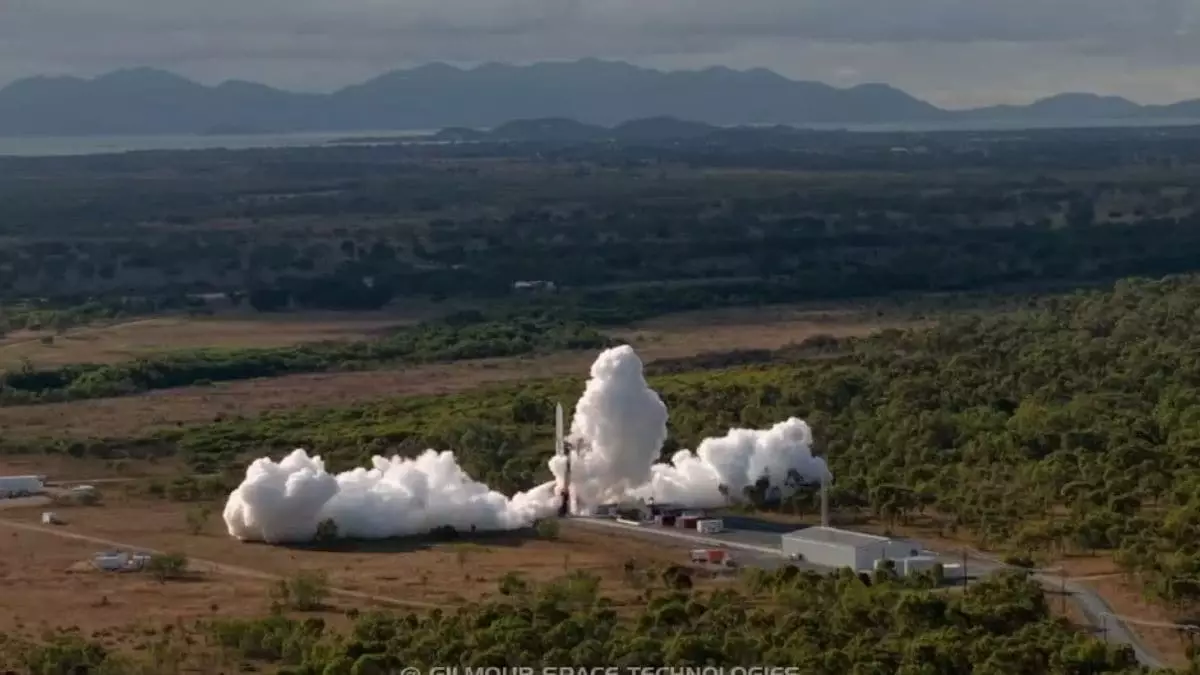Australia’s recent foray into orbital spaceflight, marked by the launch of the Eris rocket, signals a shift in national ambitions. For over half a century—a period marked by a cautious but steady reliance on international space agencies—the country has finally taken a bold step towards independence in space technology. While the initial launch ended in failure, its importance lies in the unprecedented effort to build an entirely homegrown space capability. This move challenges assumptions about Australia’s status as a mere observer in the global space arena, pushing the nation from a passive participant to an active contender. It’s a testament to a growing national confidence, coupled with the recognition of space as a strategic domain that cannot be ignored.
However, this milestone also raises concerns. Launch failures are costly, both financially and in terms of reputation. Without a clear strategy for how such setbacks fit into a long-term plan, critics can argue that Australia may be rushing into space innovation without sufficient groundwork. The risk is that prematurely celebrating or overestimating the significance of such a first attempt could undermine future efforts, causing the country to fall into the trap of overpromising and underdelivering.
Analyzing the Technical Hurdles and Their Implications
The crash of the Eris rocket merely 14 seconds after liftoff is a stark reminder that spaceflight remains a treacherous endeavor fraught with technical pitfalls. While Gilmour Space’s leadership emphasized the value of extracting lessons from every failed attempt, such failures often come at a steep cost. The issues they faced—particularly the payload fairing failure caused by a power surge—highlight systemic vulnerabilities that cannot be ignored. It reveals a lack of robustness in the design and testing phase, which raises questions about the adequacy of the progenitor’s technical expertise and resource allocation.
Furthermore, the repeated delays caused by weather phenomena and technical glitches expose a broader concern about Australia’s ability to develop reliable launch infrastructure. Building a sustainable launch program requires patience, rigorous testing, and an understanding of environmental factors—elements that the Gilmour brothers’ enterprise appears to be still grappling with. If Australia aims to become a serious player, these hurdles must be addressed with urgency, not just as temporary setbacks but as core issues shaping their strategy moving forward.
Balancing National Pride with Practical Realities
Gilmour Space’s initiative is undoubtedly a source of national pride; it’s an achievement that signifies Australia’s intent to develop its space industry. However, the political and commercial implications of such endeavors demand a nuanced perspective. It is not enough for the industry to generate headlines with initial launches; success must be measured by consistency, safety, and technological advancement. Flag-waving alone risks overshadowing real progress.
The optimism expressed by the founders, Adam and James Gilmour, is commendable but should be tempered with realism. Setting lofty goals without meticulously planning for the inevitable technical setbacks can result in disillusionment. Moreover, as Australia ventures into the crowded and highly competitive space launch market, the country must prioritize strategic partnerships and investments in research and development. Relying solely on indigenous innovation, at least in the early stages, could hinder development and lead to further setbacks.
It’s also worth noting that Australia’s political center—liberalism—advocates for balanced progress: fostering innovation while safeguarding environmental and safety standards. The recent crash, which caused no injuries or environmental harm, underscores the importance of maintaining such standards even amid ambitious expansion. Balancing progress with responsibility should be the nation’s guiding principle, especially as it seeks to carve out a niche in the global space economy.
The Future of Australia’s Space Ambitions
The failure of the Eris launch is no doubt a blow, but it should serve more as a catalyst than a condemnation. Future success hinges on Australia’s willingness to learn from setbacks, invest in robust engineering, and cultivate a resilient space ecosystem. The country must harness lessons taken from these early attempts and incorporate international best practices to ensure reliability and safety.
Above all, Australia’s space ambitions are rooted in a desire for technological independence and national pride. Achieving this goal will require a pragmatic approach that recognizes the setbacks as part of the process rather than anomalies. If Australia commits to a strategy of perseverance, innovation, and responsible development, the initial failures may eventually pave the way toward a sustainable and influential space presence. But rushing headlong into space launches without addressing foundational issues risks turning setbacks into perpetual defeats.


Leave a Reply